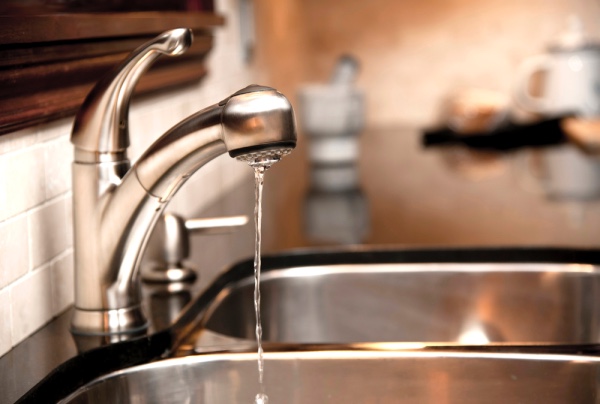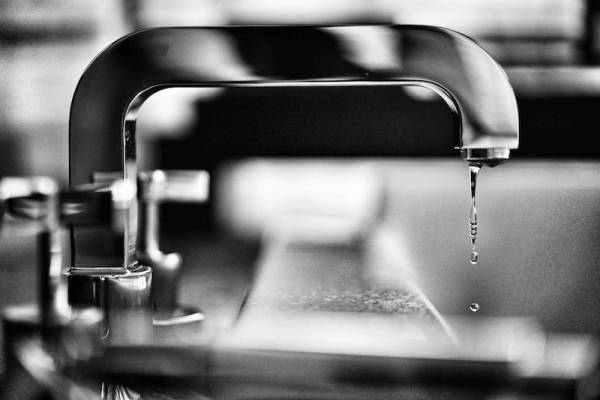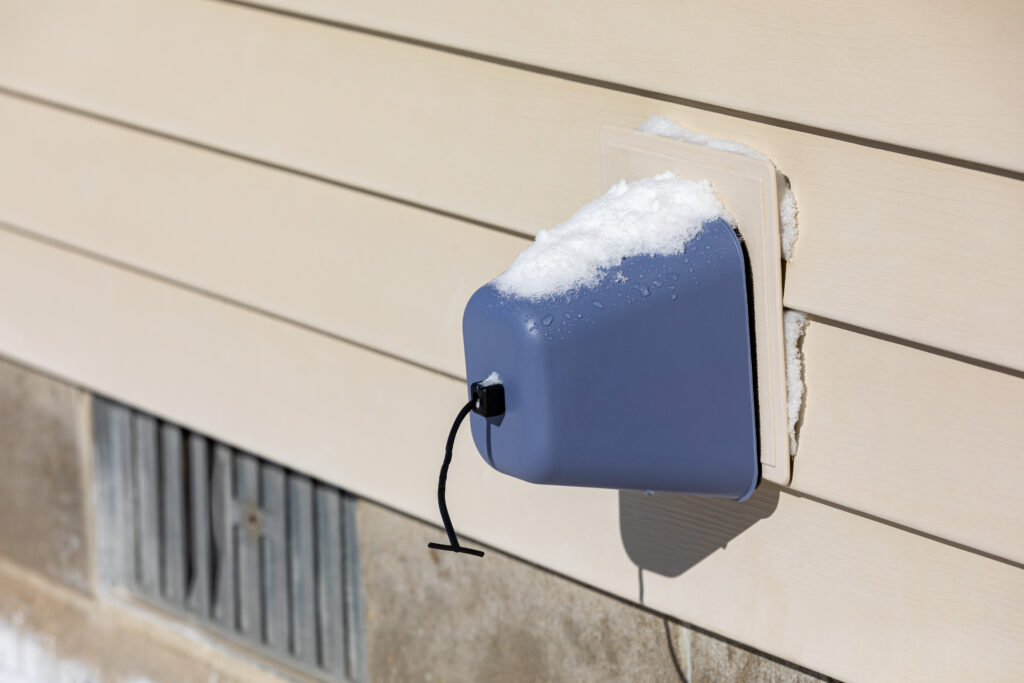
Table of contents
- How to Protect Your Pipes in McKinney’s Winter Weather
- Allow Indoor Faucets to Drip
- Open Cabinets
- Keep Garage Doors Shut If Water Supply Lines are Inside
- Keep Thermostat at a Steady Temperature
- If Away from Your Home for a Few Days, Shut Off the Water at the Main Valve
- Cover Any Openings Near the Foundation
- Seal Up Cracks and Gaps
- Apply Protective Products to Exposed Pipes
- Winterizing Plumbing Systems in Collin County and North Texas
- What should I do if my pipes freeze in McKinney?
- Why Winter Plumbing Prep is Crucial for North Texas Residents
- FAQs
Residents of McKinney and Collin County experience a lot of warm weather. However, even in Texas, freezing temperatures can occur. If the proper steps aren’t taken, it can be devastating for your home’s plumbing. Here, Bewley Plumbing will discuss ways to protect your home’s plumbing during winter.
How to Protect Your Pipes in McKinney’s Winter Weather

You can help protect your home’s pipes in freezing weather in several ways. The following are a few examples.
Allow Indoor Faucets to Drip
When temperatures are forecast to drop below freezing, set indoor faucets so they drip slowly. This may help prevent pressure from building up in the pipes. It is especially important to do this if pipes outside are frozen. You don’t have to do this for every faucet. Instead, focus on faucets that have an exterior facing wall. Ensure that both hot and cold water are dripping, as these use separate pipes. Set the faucet to lukewarm, if it doesn’t have separate handles for hot and cold water.
Open Cabinets
If temperatures are forecast to go below freezing, open kitchen and bathroom cabinets to allow warm air from your home to help heat your pipes. This allows the ambient air to circulate around your pipes.
Keep Garage Doors Shut If Water Supply Lines are Inside
If you have water supply lines in your garage, keeping your garage doors closed can help keep them warmer.
Keep Thermostat at a Steady Temperature
Ensure that your thermostat is set to at least 55 degrees Fahrenheit. This helps your pipes stay warm enough so they don’t freeze.
If Away from Your Home for a Few Days, Shut Off the Water at the Main Valve
If you plan to be away from home for a few days, shut the water off to your home by turning off the main valve and opening faucets so pressure can be relieved.
Cover Any Openings Near the Foundation
Openings around your home’s foundation let potentially pipe-freezing cold in. Covering those up can help prevent cold air from entering your home in the winter.
Seal Up Cracks and Gaps
Cracks and gaps on the outside of your home can allow cold air into your home, potentially threatening your pipes. By using caulking and weatherstrips to seal off leaks, you may be able to reduce the cold air reaching your pipes.
Apply Protective Products to Exposed Pipes
Exposed pipes can be insulated using a pipe sleeve. You can also apply UL-listed products like heat tape and heat cables. Please take care using heat cables and contact a professional if you don’t know how to safely apply them.
Winterizing Plumbing Systems in Collin County and North Texas

Along with your home’s pipes, other parts of the plumbing need to also be winterized. The following are a few examples.
- Remove outdoor hoses: If your outdoor faucets have hoses attached to them, disconnect and drain them so water can’t freeze inside them.
- Drain and turn off your lawn sprinkler system: To prevent water from freezing inside your lawn sprinkler system, turn it off and drain it.
- Turn off the water to washing machines in unheated areas: In freezing weather, an unheated garage can get especially cold. This presents a problem if you have a washing machine in an unheated area of your home, such as a garage, as the water going to it can freeze. If the forecast calls for freezing weather, you’ll want to turn off water to washing machines placed in unheated places.
- Wrap exterior pipes and faucets: Make sure exterior faucets and pipes, such as those going to a water filtration system, are wrapped and insulated using appropriate foam insulation. Outdoor faucet covers may be available at your local hardware store.
- Protect swimming pool plumbing: Conduct normal pool winterization. Drain your pool’s equipment, like filters and pumps, of any excess water to help protect against freezing.
What should I do if my pipes freeze in McKinney?
If your pipes end up freezing, there are several steps you need to take to protect your home. If you turn on your faucet and only a trickle of water comes out, the pipe may have frozen.
Turn Off the Water at The Shutoff Valve
If your pipes have frozen, you must turn off the water at the shutoff valve. Doing so can help keep more water from going into pipes and reduce pressure that could potentially cause pipes to crack or burst.
Contact a Plumbing Professional
Before you attempt to thaw pipes yourself, it is important to contact a plumbing professional. They can help you determine what steps to take next or recommend professional services. Frozen pipes may burst, making the problem worse.
Steps to Thaw Pipes
While it is highly advisable to reach out to a professional before trying to thaw pipes, the following are some dos and don’ts when it comes to thawing frozen pipes from the Red Cross.
- NEVER use a charcoal stove, propane or kerosene heater, blow torch, or any type of open flame in an attempt to warm pipes. Using these for thawing pipes is incredibly dangerous.
- When attempting to thaw a pipe, be sure to keep a faucet connected to it, if there is one, open. As it thaws, water flows through the frozen section of the pipe, helping it to thaw.
- Pipes can be wrapped with towels soaked in hot water, wrapped with an electrical heating pad, or dried with an electric hair dryer. A portable space heater can also be used, but take care to keep it away from any flammable materials.
- If you can safely do so, apply heat until the water pressure returns to normal.
- If you are unable to thaw the pipe, locate it, or access it, you’ll have to contact a plumber.
- Inspect the other faucets in your home to see if their pipes have frozen.
Why Winter Plumbing Prep is Crucial for North Texas Residents

Preparing your plumbing for the North Texas winter can help prevent expensive water damage. A little preparation can save a lot of money. You can also benefit from uninterrupted water use, so you can wash your hands, clean dishes, and take showers.
FAQs
-Let faucets slowly drip, making sure both hot and cold water faucets are on. In the case of a single faucet for hot and cold water, set it to lukewarm.
-Open kitchen and bathroom cabinets
-Have your garage doors shut if there are supply lines in them.
-Maintain a steady thermometer temperature of at least 55 degrees Fahrenheit.
-If you are away from your home for a few days, shut off the water at the water main and open faucets.
-Cover up openings near your home’s foundation.
-Use caulking and weather strips to seal up cracks and gaps.
If the temperature drops to or below 32 degrees Fahrenheit, there is a chance your pipes could freeze. However, pipes are more likely to freeze when temperatures drop below 20 degrees Fahrenheit. The longer the temperature is below freezing, the higher the chance of your pipes freezing.
Yes. While people may often associate North Texas with warm weather, freezing temperatures are NOT uncommon. According to the National Weather Service, on average, from 1991 to 2020, the Dallas-Fort Worth area saw 29 freezing days from October to March.
Yes! Moving water is less likely to freeze.



